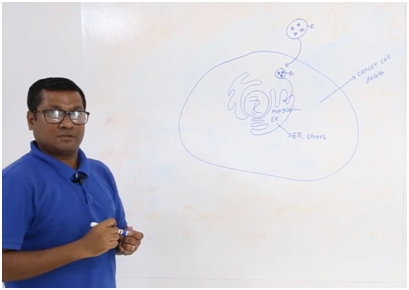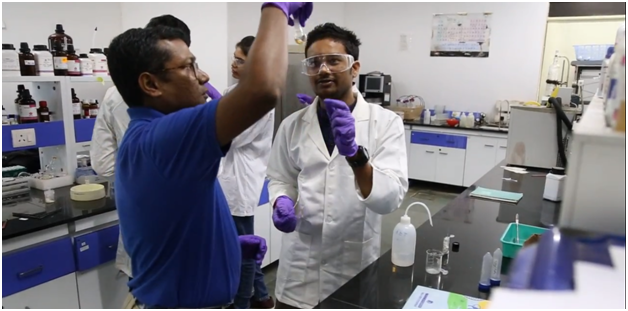A nanoparticle engineered by an IIT Gandhinagar professor and his IISER Pune team could potentially target and destroy cancer cells in a more efficient way, in the future, as compared to existing modes of cancer-therapy.
Dr. Sudipta Basu is a researcher in Chemistry and a professor at the Indian Institute of Technology, Gandhinagar since 2018. He and his team at the Indian Institute of Science Education and Research, Pune, have together synthesized a nanoscale particle* that impairs the evolution of cancer cells by activating what is known as programmed cell death or apoptosis. It is a word of Greek origin which means falling off (as in, leaves from a tree) and refers to the suicide of cells in the body that are no longer needed, triggered through a cascade of processes.

There are certain housekeeping proteins, better known as chaperone proteins, in the cells whose job is to degrade and destroy the wrongly synthesized unwanted proteins. The study focused on inhibiting one such chaperone protein, hsp90, in cancer cells.
“In simple terms, the nanoparticle is a kind of a package comprising of three main components. The first element is a tag which serves as an address to ensure delivery at the right location. The second is a fluorescent probe which visually tracks the movements of this nanoparticle with the help of microscopy, similar to a GPS tracking system. The third and final constituent is the hsp90 (housekeeping protein) inhibitor, a small molecule drug, which is released from the package on reaching its destination,” he continued further.
This research was conducted on an in-vitro (outside a living organism) cellular level where it cannot distinguish between normal and cancer cells. But its utilization lies at the level of animals and humans where the system is comparatively different. Both animals and humans have a well developed circulatory system with proper blood vessels, showing a considerable variation between the vasculature near healthy tissue and cancer tissue. The pore size of blood vessels in case of cancer is bigger and, therefore, nanoparticles can easily travel through them towards their target. This is not possible with healthy tissues where the cell-cell and tissue-tissue junctions are very tight, restricting the invasion of nanoparticles upto a large extent. As a result, this nanoparticle mediated drug delivery will have less effect on normal cells as compared to cancer cells. It will significantly reduce the levels of collateral damage, which is a concerning issue with the therapy of the present times and will also be efficiently processed and cleared by the kidneys, making it much safer.
In the future, there is a need to carry out similar experimentation and further studies for the purpose of validating this therapy in multiple different types of cancer cells. The next step would animal trials which, if successful, would be followed by clinical trials on humans. And only after could start the industrial production of this nanoparticle-mediated drug delivery for the next-generation cancer therapy.

“Cancer affects everyone and it’s up to all of us to support the important research that can one day make a much sought-after cure a reality.” – Angie Harmon, American actress and model
— — — — — — — — — — — — — — — — — — — — — — — — — —— — — — — — — — — — — — — — — — — — — — — — — — — —— — — — —
* The results of this research have been published in “Lipid nanoparticle-mediated induction of endoplasmic reticulum stress in cancer cells,” ACS Applied Bio Materials, DOI: 10.1021/acsabm.9b00532, Aug. 2019.
** This story has also been published on Medium/ Noteworthy – The Journal Blog.

APEKSHA SRIVASTAVA
Senior Project Associate

